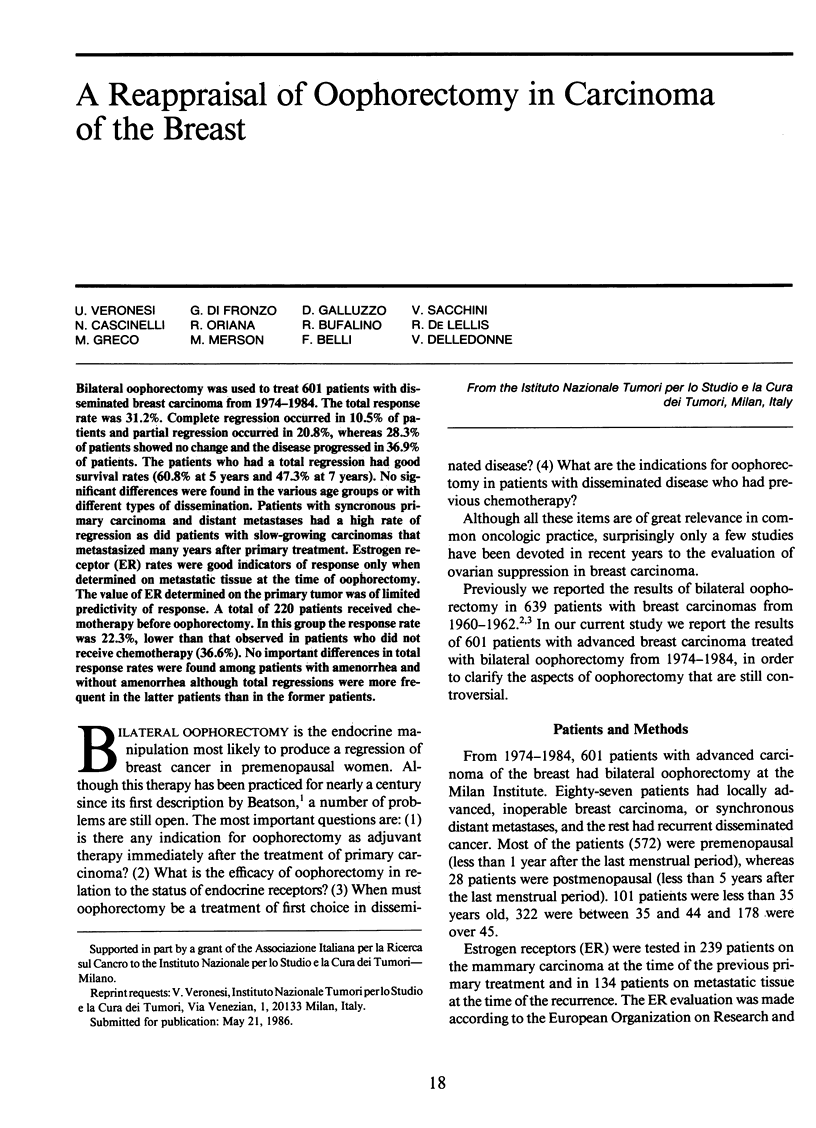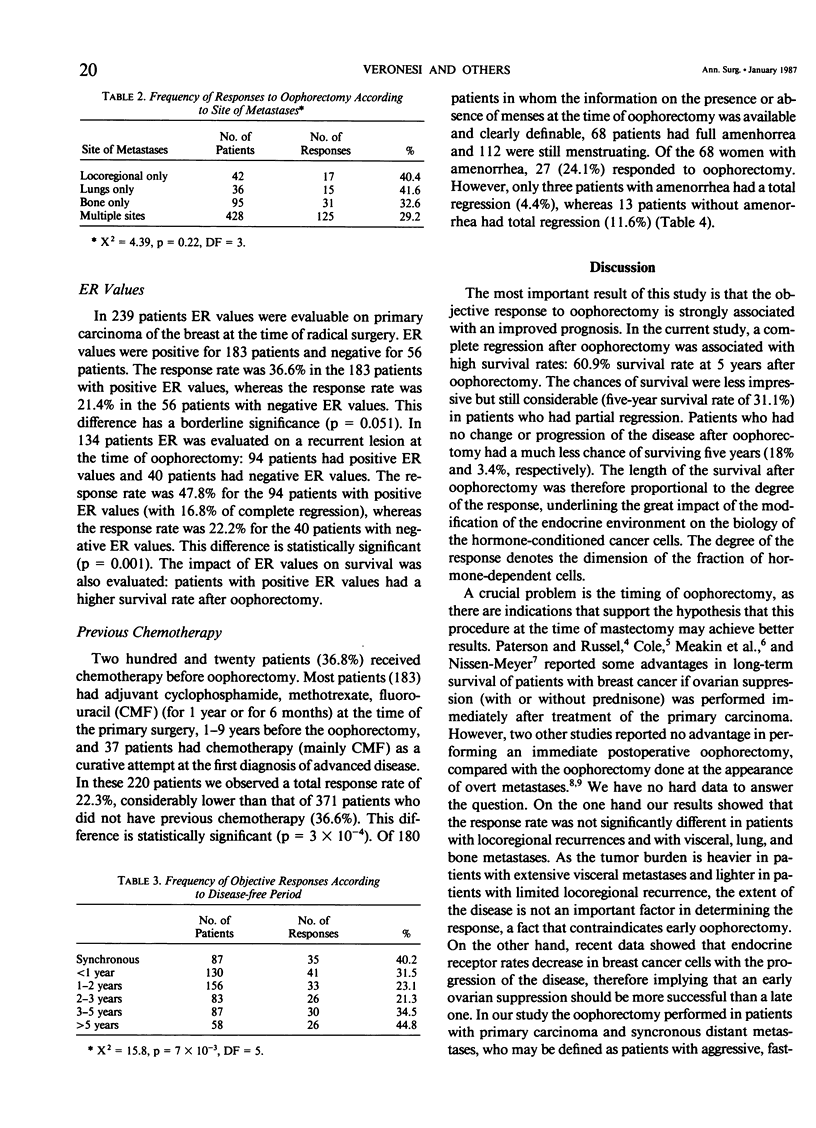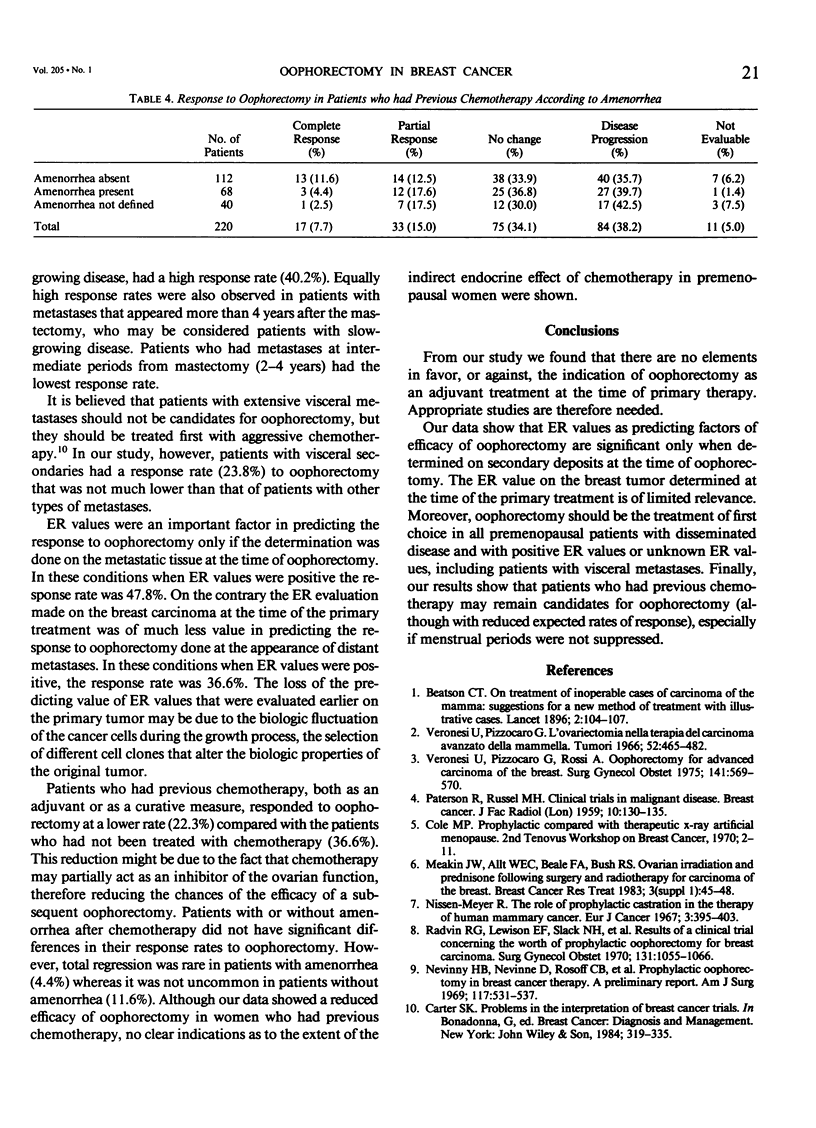Abstract
Bilateral oophorectomy was used to treat 601 patients with disseminated breast carcinoma from 1974-1984. The total response rate was 31.2%. Complete regression occurred in 10.5% of patients and partial regression occurred in 20.8%, whereas 28.3% of patients showed no change and the disease progressed in 36.9% of patients. The patients who had a total regression had good survival rates (60.8% at 5 years and 47.3% at 7 years). No significant differences were found in the various age groups or with different types of dissemination. Patients with syncronous primary carcinoma and distant metastases had a high rate of regression as did patients with slow-growing carcinomas that metastasized many years after primary treatment. Estrogen receptor (ER) rates were good indicators of response only when determined on metastatic tissue at the time of oophorectomy. The value of ER determined on the primary tumor was of limited predictivity of response. A total of 220 patients received chemotherapy before oophorectomy. In this group the response rate was 22.3%, lower than that observed in patients who did not receive chemotherapy (36.6%). No important differences in total response rates were found among patients with amenorrhea and without amenorrhea although total regressions were more frequent in the latter patients than in the former patients.
Full text
PDF



Selected References
These references are in PubMed. This may not be the complete list of references from this article.
- Jones S. E., Durant J. R., Greco F. A., Robertone A. A multi-institutional Phase III study of nabilone vs. placebo in chemotherapy-induced nausea and vomiting. Cancer Treat Rev. 1982 Dec;9 (Suppl B):45–48. doi: 10.1016/s0305-7372(82)80035-2. [DOI] [PubMed] [Google Scholar]
- Lancet M. [The contraceptive pill and vascular accidents]. Harefuah. 1983 Feb 1;104(3):107–108. [PubMed] [Google Scholar]
- Nissen-Meyer R. The role of prophylactic castration in the therapy of human mammary cancer. Eur J Cancer. 1967 Nov;3(4):395–403. doi: 10.1016/0014-2964(67)90024-2. [DOI] [PubMed] [Google Scholar]
- Ravdin R. G., Lewison E. F., Slack N. H., Dao T. L., Gardner B., State D., Fisher B. Results of a clinical trial concerning the worth of prophylactic oophorectomy for breast carcinoma. Surg Gynecol Obstet. 1970 Dec;131(6):1055–1064. [PubMed] [Google Scholar]
- Veronesi U., Pizzocaro G. L'ovariectomia nella terapia del carcinoma avanzato della mammella. Tumori. 1966 Nov-Dec;52(6):465–482. doi: 10.1177/030089166605200607. [DOI] [PubMed] [Google Scholar]
- Veronesi U., Pizzocaro G., Rossi A. Oophorectomy for advanced carcinoma of the breast. Surg Gynecol Obstet. 1975 Oct;141(4):569–570. [PubMed] [Google Scholar]


